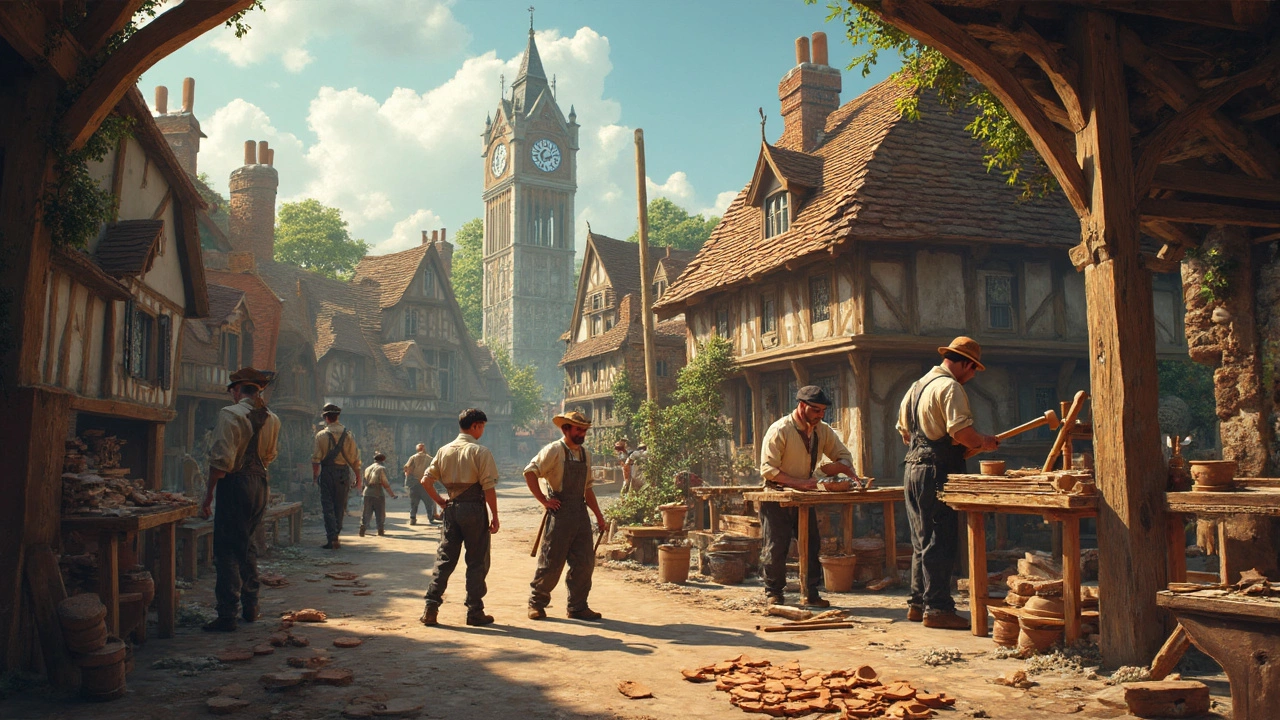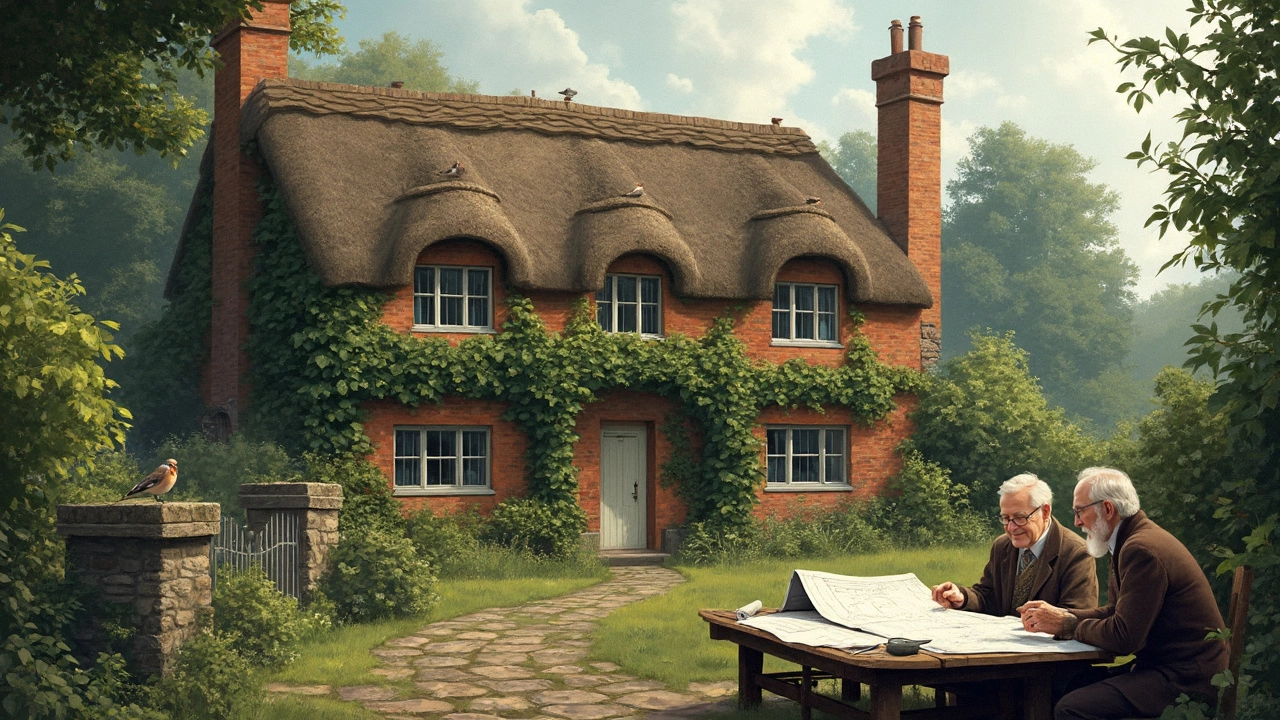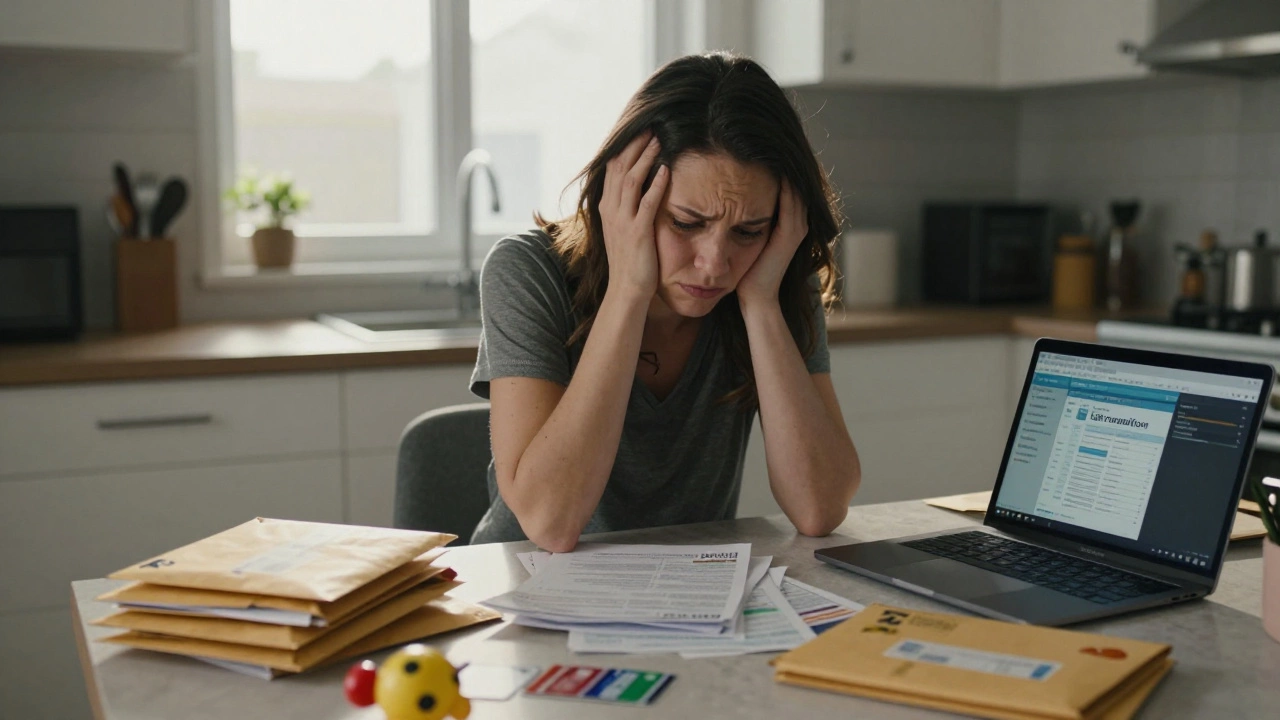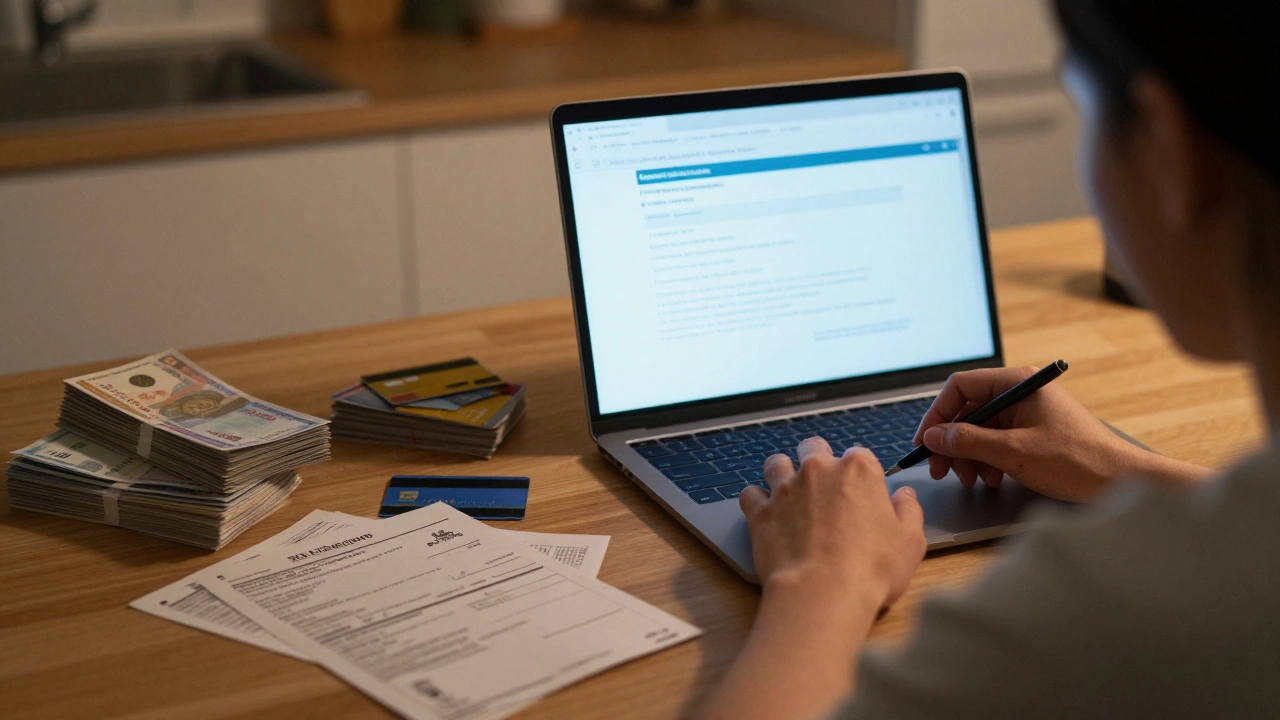Ever wondered how much it would cost to rebuild your home from scratch? We're not talking about selling it; we're talking about replacing it entirely if something catastrophic happens. This is where the replacement cost comes into play. Knowing this number helps you make sure you've got the right insurance coverage—because nobody wants to be left in the lurch if disaster strikes.
First off, let's clear up a common mix-up: replacement cost isn't the same as market value. Market value is what your house would sell for today, but replacement cost is what you'd need to fork over to rebuild it just as it is. These numbers can be worlds apart because market value includes the land and location perks, neither of which you need to pay for again during a rebuild.
Replacement costs factor in materials, labor, and even those little custom features that make your home yours. So, how do you pin down this figure? Well, there are some handy online calculators that can give you a ballpark. But for the most accurate estimate, you might want to bring in a professional appraiser or your insurance agent. They often know what's what and can help fine-tune these estimates considering local costs.
- Understanding Replacement Cost
- Market Value vs. Replacement Cost
- Factors Affecting Replacement Cost
- Tools for Estimating Replacement Cost
- Tips for Reviewing Your Coverage
- Common Mistakes to Avoid
Understanding Replacement Cost
So, what exactly does replacement cost mean when we're talking about your home? Simply put, it's the amount you'd need to completely rebuild your house from the ground up if, heaven forbid, something disastrous happens. It's all about the actual expenses you'd face, not what your home's worth on the open market.
This includes everything from the bricks and mortar to the roof shingles and kitchen cabinets. You'll have to consider fluctuating prices for raw materials and local labor rates, which can be quite different depending on where you live. Was your home built with specific architectural details or unique features? Those will count too.
How is Replacement Cost Different from Market Value?
It might be tempting to think that because your home is worth X amount of dollars in the real estate market, that's what it would cost to rebuild it. Nope, not quite. Market value includes the value of your land and nearby amenities, while the replacement cost is purely about the building itself—no location perks included.
Why Replacement Cost Matters
Why is this figure so darn important for your home insurance? Well, if your policy only covers the market value, you might find yourself short on funds when it's time to rebuild, especially if construction costs have gone up since your house was built. Making sure you have the right amount of insurance means you can rebuild your home to its former glory without diving into your savings or taking on debt.
For peace of mind, understanding the difference and keeping your replacement cost updated can save you a lot of trouble down the road. So next time you review your insurance policy, pay close attention to these numbers. They're the key to making sure you and your home are properly covered.
Market Value vs. Replacement Cost
Okay, let's get to the nitty-gritty: understanding the difference between market value and replacement cost. These terms get tossed around a lot, but they're not interchangeable. So, what's the deal?
Market value is what your home would go for if you stuck a 'For Sale' sign in the yard today. This includes the actual building, land, and even the neighborhood vibe. It's pretty much what buyers are willing to cough up, considering all the charms and ticks of your home.
Now, replacement cost focuses solely on how much it would take to rebuild your home from the ground up. We're talking materials, labor, and bringing it back to its former glory—not what someone would pay to own it.
Why the Huge Difference?
The split between market value and replacement cost can be surprising. Imagine your home is in a sought-after area. The market value might be sky-high, thanks to the location. But the replacement cost? It might be lower since you're not buying fresh land.
Here's an interesting tidbit: houses in regions where real estate is red-hot often have a much lower replacement cost compared to the market value. It's mostly because land prices can be astronomical, but rebuilding doesn't require rebuying that land.
Getting the Numbers Right
To make sure you're covered, don’t just guess. You wouldn’t put a price on your car without research, right? Online calculators are a start, but consider a seasoned pro, like an appraiser or a reliable insurance agent, for an accurate replacement cost assessment.
| Factor | Market Value | Replacement Cost |
|---|---|---|
| Land Value | Included | Excluded |
| Construction Costs | Not Specific | Detailed |
| Location Influence | High | None |
This confusion can lead people to either overpaying insurance or, worse, being underinsured. To sidestep mishaps, understanding these terms is your best bet.
Factors Affecting Replacement Cost
When calculating the replacement cost of your home, several factors come into play that you shouldn't overlook. Knowing these can save you from future headaches and overpriced insurance premiums.
Materials
One of the biggest factors is the cost of materials. Whether your home is a simple wood-frame house or a luxurious marble mansion matters a lot. Prices for materials like lumber and steel can vary and tend to fluctuate with the economy. Keep an eye on these trends, or better yet, consult with a contractor to get the latest costs.
Labor Costs
The cost of hiring people to rebuild your home is another biggie. Labor charges can differ based on where you live. Urban areas might have higher rates due to the higher cost of living and demand. For a precise estimate, you might want to chat with a local builder or contractor.
Home Features
Don't forget those unique features in your home that can increase build costs. We're talking custom woodwork, high-end appliances, or that fancy home theater setup you love. Anything that's above builder-grade materials will add to your home's replacement cost.
Location
Where your home is situated can have a surprising impact. Homes in disaster-prone areas, like those near fault lines or in hurricane zones, usually have higher replacement costs. Why? Because rebuilding in these areas often requires specialized materials and designs to withstand local conditions.
Size and Style
Bigger homes need more materials and labor, so naturally, that bumps up the price. Also, certain architectural styles may require more expensive materials or intricate designs, which also ups the cost.
| Factor | Impact on Cost |
|---|---|
| Materials | High Fluctuations |
| Labor Costs | Regional Variations |
| Home Features | Custom Costs |
| Location | Environmental Considerations |
| Size and Style | Higher Expenses |
Knowing these factors can really help when you're calculating the replacement cost. It's a good idea to review this with your home insurance agent periodically to make sure you're not underinsured. By staying informed, you make sure your coverage matches reality.

Tools for Estimating Replacement Cost
Figuring out the replacement cost of your home isn't as daunting as it might sound, especially with some nifty tools at your disposal. Whether you're tech-savvy or prefer pen and paper, there's something for everyone. Let’s look at what you can use to nail down these figures accurately.
Online Calculators
These are incredibly popular because they're quick and easy. Most insurance companies offer free home insurance calculators on their websites. Simply punch in some details about your home—like square footage, the number of rooms, and the type of construction—and voilà, you get an estimate. Keep in mind, these calculators provide a rough ballpark figure. For precision, you might need to dig deeper.
Professional Appraisal
If you're after accuracy, hiring a professional appraiser could be a smart move. They come equipped with local expertise and can take into account nuances like unique architectural features or high-end finishes. Sure, there's a cost involved, but it could save you a lot of headaches in the long run.
Consulting with Your Insurance Agent
Your insurance agent is another goldmine of knowledge. They often help with estimating replacement cost as part of their service. An agent will consider local labor costs and material expenses, ensuring that your estimate aligns with reality.
DIY Estimation
If you fancy DIYing it, compile a list of your home's features and appliances, then research local building and labor costs. Combining this data gives you a pretty decent personal estimate.
Lastly, remember to update your replacement cost estimate every few years. Construction costs and materials can fluctuate, so keeping your info current means you're always adequately covered.
With these tools, making sure your property insurance coverage is spot on becomes a breeze. No more guesswork, just smart planning.
Tips for Reviewing Your Coverage
So you've got home insurance, but when's the last time you took a good look at it? Just because you signed those papers doesn't mean you're set for life. Here's how you can make sure your coverage really has your back.
Check Your Replacement Cost
Your policy should cover the replacement cost, not just the market value. If your home is insured for too little, you might end up with a big bill if you need to rebuild. Compare your current amount with a recent estimate, or consider hiring a pro to give you a precise number.
Assess Coverage for Personal Belongings
Your insurance also accounts for what's inside your home. You know, like your electronics and furniture. Take a look at what they’re worth now, not five years ago. Keep an inventory and adjust the amount if things have changed.
Understand What’s Not Covered
Not everything is covered, and it’s crucial to know these gaps. Common exclusions are natural floods or earthquakes. You might need additional policies to protect against those. Chat with your insurer and ask for a breakdown of these exclusions.
Add Coverage for Home Upgrades
If you've made renovations like a kitchen upgrade or added a new deck, let your insurer know. These can boost your home’s replacement cost. Ensure your policy reflects these shiny new features.
Re-evaluate Annually
Life changes, and so can your insurance needs. Make it a habit to review your insurance each year. Check for any adjustments that match your current lifestyle or home improvements. It can help you avoid unwelcome surprises down the road.
| State | Average Home Replacement Cost ($) |
|---|---|
| California | 300,000 |
| Texas | 250,000 |
| Florida | 275,000 |
Remember, ignoring your policy until you need it is a big no-no. Follow these tips so you can sleep easy knowing you're properly covered, no matter what comes your way.
Common Mistakes to Avoid
Calculating the replacement cost for your home might sound straightforward, but a few missteps can lead to underinsurance or overpayment. Here are some pitfalls you should steer clear of:
Ignoring Local Building Costs
Don't base your estimates too heavily on national averages. Prices for materials and labor can swing dramatically based on where you live. Make sure your estimates reflect what's actually happening in your neck of the woods.
“Replacement cost should reflect real-time local costs for rebuilding, not just generalized numbers,” says Jane Doe, a top home insurance analyst at HomeSafe Inc.
Overlooking Key Features
Details matter. Are your counters marble? Is there a custom fireplace? Such features need to be included in your calculations. Missing them could mean not having enough coverage to bring your home back to its former glory.
Confusing Market Value with Replacement Cost
Remember, market value and replacement cost aren't identical twins. Market value considers location and land, while replacement cost focuses solely on reconstruction. Mixing these up can cause your insurance coverage to falter when it matters most.
Underestimating the Importance of Updates
If you've made any major updates, like putting in a new roof or upgrading the electrical system, your old replacement cost might be outdated. Always keep your insurance company aware of such upgrades so they can adjust your coverage accurately.
Forgetting About Permits and Fees
Rebuilding might require permits and inspections, and these costs can add up quickly. Make sure they’re part of your replacement cost estimate.
- Update regularly: Your home’s replacement cost can change over time, so keep those estimates current.
- Be thorough: Don’t leave out labor and material aspects, no matter how small.
- Consult experts: Talk to evaluators or insurance pros to make sure your numbers make sense.
Avoiding these common mistakes can help you get the right amount of home insurance so you're not caught off guard if the unexpected happens.








